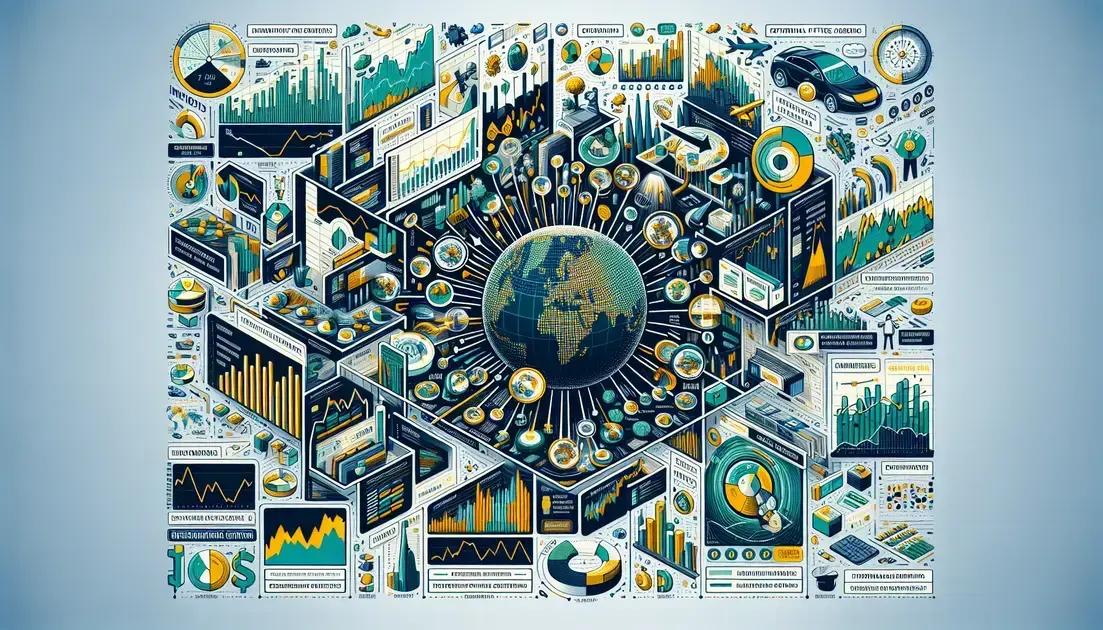Discover Their Impact on Your Finances
Advertising
Interest rates are crucial components in the financial world, representing the cost of borrowing money or the earnings on savings. Simply put, an interest rate is a percentage of the amount borrowed or saved that is paid back or earned over a specific period.
Types of Interest Rates
There are two main types of interest rates: fixed and variable. Fixed interest rates remain constant throughout the life of a loan or investment, providing predictability in payments. In contrast, variable interest rates can change based on economic factors, which may lead to fluctuating payments.
How Interest Rates Are Determined
Interest rates are influenced by various factors, including inflation, central bank policies, and the economy’s overall health. Central banks, such as the Federal Reserve, set benchmark rates that influence borrowing costs across the financial system. When the economy is strong, rates may increase, while lower rates often indicate attempts to stimulate growth during weaker periods.
The Importance of Interest Rates
Understanding interest rates is essential for making informed financial decisions. Whether it’s a mortgage, car loan, or savings account, knowing how interest rates work helps individuals strategize their finances effectively. For instance, a lower rate can save a borrower significant money over time, while higher rates can enhance the earnings on savings.
Being aware of current interest rates and trends can empower you to choose the best financial products for your needs and goals. In making decisions, consider consulting with financial advisors or using online calculators to understand better how interest rates will impact your unique situation.
How Interest Rates Affect Your Loans

Interest rates play a vital role in how much you pay for loans. When you take out a loan, whether it’s for a car, house, or personal need, the interest rate determines the total cost of that loan. A higher interest rate means you will pay more over time due to the added cost of borrowing.
The Cost of Borrowing
Your monthly payments will be affected by the interest rate on your loan. A lower rate can lead to more affordable payments, while a higher rate can stretch your budget thin. For example, if you borrow $10,000 at a 5% interest rate, you will pay less over the loan’s life than if your rate were 10%.
Example of Loan Payments
To illustrate this, consider two similar loans: one at 5% and another at 10% over a five-year term. The 5% loan might cost you around $188 per month, while the 10% loan could push your payments to $212. It’s clear that even a few percentage points can make a significant difference in your financial burden.
The Influence of Loan Terms
Longer loan terms usually come with higher interest rates. While lower monthly payments might sound appealing, you can end up paying significantly more in interest overall. Shorter terms often have lower rates and less total interest, making them more economical in the long run.
Factors Affecting Your Interest Rates
Your personal credit score, the type of loan, and current market trends all affect your interest rate. Lenders typically offer better rates to borrowers with higher credit scores because they are seen as less risky. Understanding these factors can help you make informed decisions when applying for loans.
The Impact of Interest Rates on Savings Accounts
Interest rates have a direct impact on how much money you can earn from your savings accounts. When banks set their interest rates, they determine how much they will pay you to keep your money with them. A higher rate means you’ll earn more over time.
The Role of Interest Rates in Savings
Typically, savings accounts offer lower interest rates compared to other investment options. However, the rate still matters because it affects how quickly your savings can grow. For instance, if your savings account has a 1% interest rate, you earn $10 on $1,000 over a year. If the rate is 3%, you earn $30 for the same amount.
Compounding Interest
Many banks use compound interest for savings accounts. This means that you earn interest not only on your original deposit but also on the interest that accumulates over time. For example, earning 2% interest compounded annually can lead to larger savings than if you only earn simple interest.
The Effects of Low vs. High Interest Rates
When interest rates are low, such as during economic downturns, the earnings on savings accounts diminish. Conversely, high rates can encourage people to save more and can lead to significantly higher interest earnings. This effect can motivate individuals to set aside more money for future needs.
Choosing the Right Savings Account
When shopping for a savings account, it’s essential to compare the interest rates offered by various banks. Online banks often provide higher rates because of lower overhead costs. Be sure to check for any fees that might offset your earnings, as a low or no-fee account could offer a better deal even at a different interest rate.
Predicting Future Trends in Interest Rates

Predicting future interest rates involves understanding various economic indicators and trends. Factors like inflation, employment rates, and economic growth play crucial roles in shaping interest rates over time.
Economic Indicators
Central banks, such as the Federal Reserve, watch inflation closely. If inflation rises too quickly, central banks may increase interest rates to cool down the economy. Conversely, if the economy slows down, they might lower rates to encourage spending and investing.
Global Events
Global economic events can also affect interest rates. For instance, geopolitical tensions or trade disputes can lead to uncertainty in the markets, prompting central banks to adjust their rates. Keeping an eye on international news can help predict changes in local interest rates.
Market Sentiment
Market sentiment plays a key role in how economists and investors perceive future interest rates. If there is optimism about economic growth, rates could rise. On the other hand, if a recession seems likely, expectations for lower rates may prevail. Surveys and reports about consumer confidence can provide insights into market sentiment.
Technological Changes
Technological advancements can also influence how central banks operate. Improved data analysis and forecasting tools allow for better predictions about economic conditions, potentially leading to smarter, more timely adjustments in interest rates.
By analyzing these factors, individuals can make educated guesses about the direction of interest rates and adjust their financial strategies accordingly.
Understanding Interest Rates is Key to Financial Health
The exploration of interest rates reveals their significant influence on both loans and savings. From determining monthly payments on loans to affecting how much your savings can grow, interest rates are critical in personal finance decisions.
As we examined the basics, implications for loans, impacts on savings accounts, and future predictions, one thing remains clear: staying informed about interest rates empowers individuals to make smarter financial choices.
By understanding how various factors influence interest rates and keeping abreast of economic trends, you can navigate your financial landscape more effectively. Leveraging this knowledge can help you maximize your savings and minimize costs associated with borrowing.
Always remember, the landscape of interest rates is ever-evolving, making ongoing education essential for maintaining financial well-being.




